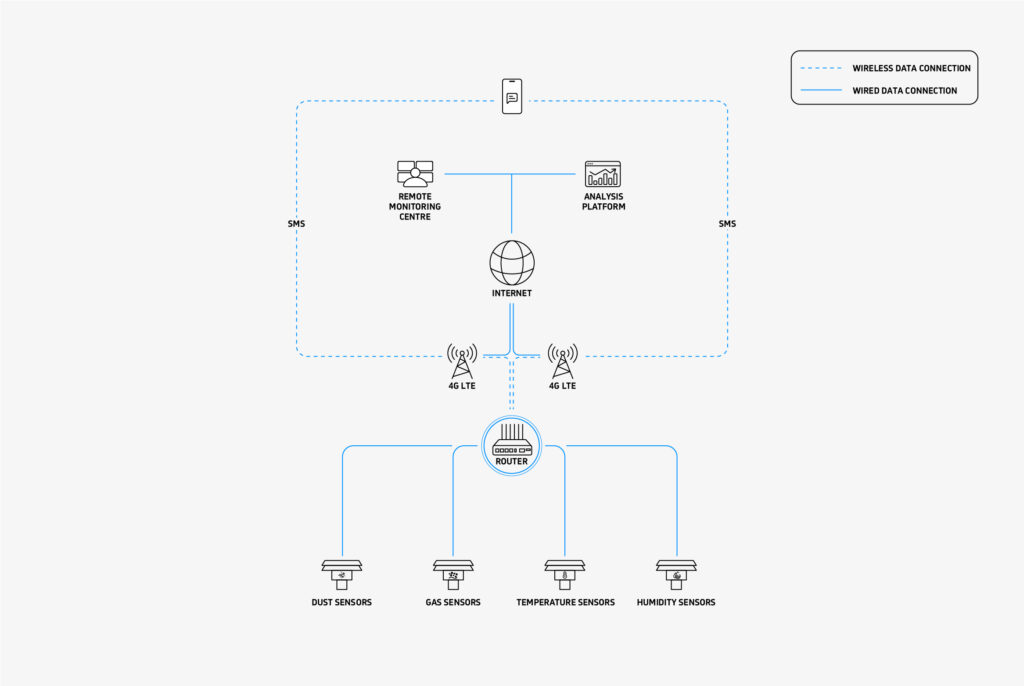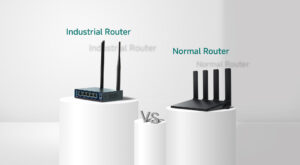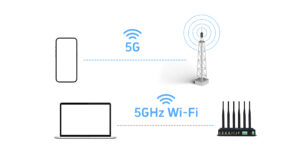Modern environmental monitoring systems powered by IoT are transforming how we detect, analyze, and act on air quality data. These systems aren’t just made up of sensors—they rely on robust wireless communication, especially when deployed in remote or mobile setups. At the heart of this communication lies the LTE router, enabling real-time access, remote diagnostics, and reliable data transfer from field devices to cloud platforms.
Whether you’re deploying air quality monitors in urban centers, industrial zones, or remote rural areas, the choice of LTE router directly impacts the reliability, efficiency, and scalability of your environmental IoT system.
In this guide, based on field-proven solutions, we break down the essential criteria for selecting an industrial LTE router tailored to environmental and air quality monitoring needs.
Why LTE Connectivity Is Critical for IoT Environmental Monitoring
IoT-based environmental monitoring stations collect data from dust sensors, gas analyzers, temperature/humidity meters, and weather stations. But the value of this data depends on how reliably it can be transmitted to remote servers for processing and compliance reporting.
To ensure that data is collected, transferred, and acted upon in real-time, each station is typically equipped with an industrial LTE router that enables:
- Secure sensor data transmission to cloud platforms
- Remote management and fault alerts
- Continuous uptime via auto-failover and dual SIM
- Operation in harsh outdoor or industrial environments
Typical IoT Environmental Monitoring Setup with LTE Router
A complete monitoring node would consist of:
- Air quality sensors (dust, gas, temperature, humidity)
- LTE cellular router with dual SIM, FTP, and remote management
- Ethernet or serial cabling from sensor to router
- Cloud or private server for data analysis and visualization
- SMS/Email alerts triggered via router based on data thresholds or system errors

Features to Look for in an LTE Router for Sensor Data Transmission
Ethernet and Serial Ports for Sensor Integration
Environmental sensors and analyzers typically connect to routers via Ethernet or serial interfaces, and these interfaces must match both the quantity and connector types required for each deployment.
When evaluating Ethernet connectivity, look beyond speed—check for 10/100 Mbps or 10/100/1000 Mbps RJ45 ports, and assess whether SFP or M12 connectors are needed for fiber or ruggedized environments. Similarly, for serial connections, verify whether the router supports RS-232, RS-485, or RS-422, depending on the data protocol used by your sensors.
COME-STAR offers a range of industrial LTE routers equipped with various combinations of RJ45 LAN/WAN ports, along with models that support serial interfaces via DB9 or terminal block connectors. This flexibility ensures seamless integration with a wide variety of dust samplers, weather sensors, and analyzers in both fixed and mobile deployments.
WAN Failover and Dual SIM for Redundancy
For IoT-based environmental monitoring, network reliability is mission-critical. Once your sensors and devices are connected to the router, ensuring that the router maintains a stable internet uplink is the next priority.
The WAN uplink—whether via cellular, Ethernet, or Wi-Fi—must support failover to prevent data loss during connectivity disruptions. In addition, dual SIM functionality with auto-switching across carriers ensures continuous operation even if the primary SIM network becomes unavailable.
COME-STAR LTE routers are engineered with multi-WAN redundancy mechanisms, including:
- Cellular-to-Ethernet and Cellular-to-Wi-Fi failover strategies
- Dual SIM slots with customizable auto-switching rules based on signal strength, data limits, or carrier availability
These features allow you to configure a router that matches the site’s infrastructure conditions, whether it’s a city rooftop or a remote industrial park.
Industrial-Grade Protection for Harsh Conditions
Air quality monitoring systems often operate in unforgiving environments—hot rooftops, humid coastal zones, dusty industrial zones, or freezing mountain areas. The LTE router must be as durable as the sensors it connects.
With over 24 years of experience in industrial communication, COME-STAR designs routers that excel in environmental protection. Key highlights include:
- Rugged aluminum housing for structural strength and heat dissipation
- Operating temperature range from -40 °C to +75 °C for all-season reliability
- Ingress protection (IP30/IP40) against dust and particles
- Level 3/4 EMC protection for electromagnetic noise immunity in heavy-duty industrial zones
These protections ensure long-term stability and safety, especially for unattended installations that demand zero-maintenance uptime.
결론
Choosing the right LTE router for IoT-based environmental monitoring goes beyond just connectivity—it ensures system reliability, data integrity, and maintenance efficiency. A good LTE router acts as the communication backbone of your monitoring network, enabling high-frequency data uploads, secure cloud interaction, and remote visibility into equipment status.
Whether you’re monitoring air quality near an industrial plant or running a mobile station for wildfire smoke analysis, investing in a rugged, feature-rich LTE router ensures that your sensors are always heard—and your data always reaches the people who need it.


